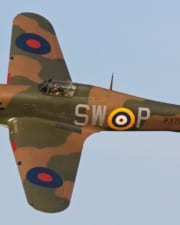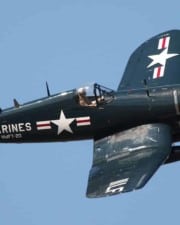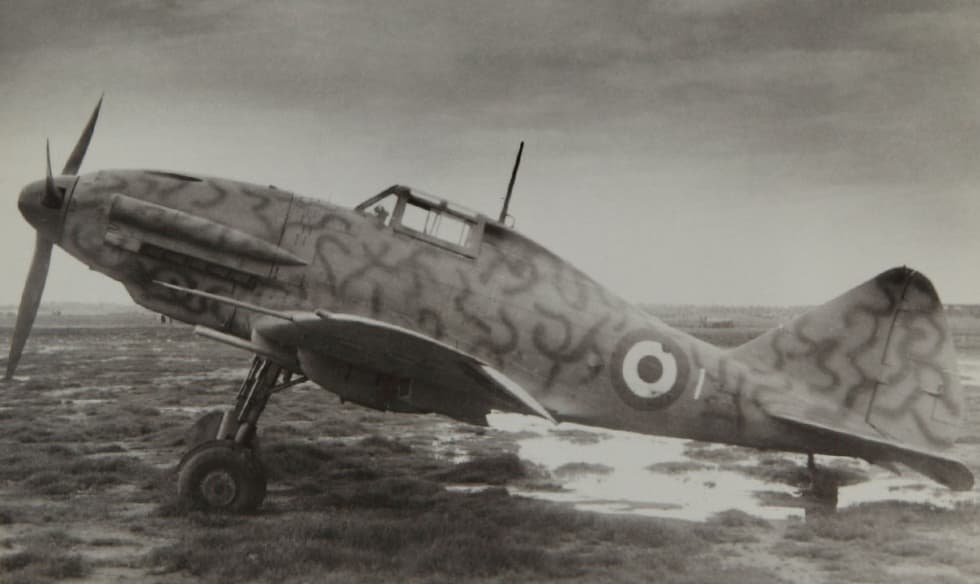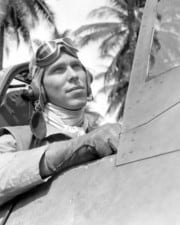From the start, Germany expected its air force to play a major role in its goals during World War II. In fact, the entire idea of blitzkrieg was largely predicated on the ability of the Luftwaffe to maintain control of the air. Additionally, German engineers created some of the most advanced designs of the war.
Table of Contents
German designers drew upon decades of manufacturing and engineering excellence when designing weapons, and their fighter planes were no exception. The Luftwaffe, or German Air Force, had long been a central part of Germany’s plans for the future.
After all, prominent Nazi leader Herman Goring had been a war hero of the First World War and felt that it was through the air that wars could be won. Additionally, the propaganda of a shiny new air force played well to German audiences.
To that end, it is not surprising that Germany fielded some of the best fighter planes of WW2, and until supplies were finally choked off in the middle of the war, could build them in incredible numbers.
However, as the supply crisis became more acute, German designers had to fall back to their comparative advantage as some of the best engineers in the world. As a result, the Germans were able to soon build fighters that were well beyond their time and unlike anything the world had seen before.
1. Messerschmitt Bf 109

By far the most successful German plane of the war, the Me 109 made up the plurality of German fighter planes throughout much of the war. While originally designed in the 1930s, the Me 109 was such a versatile fighter that it remained in use by other countries (including Israel) well after the war.
Nearly 34,000 Me 109s were built throughout the course of the war, with licensed models adding another 1,500.
The three top German aces were all Me 109 pilots, and Allied airmen were quite jealous of the capabilities that the plane offered. However, for all the advantages that the Me 109 carried, it did have one particular point that should be kept in mind. Much of the production of the planes was done by concentration camp laborers.
2. Focke-Wulf Fw 190
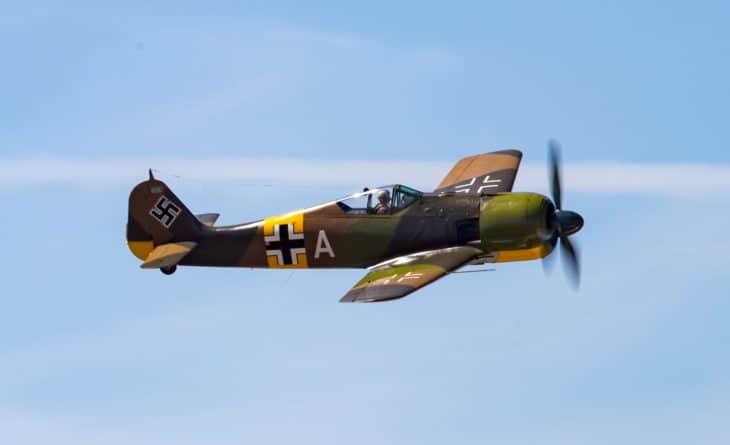
What the Me 109 had in numbers, the Fw 190 made up for with the fact that its pilots loved to fly it. The second most produced German fighter of the war, more than 20,000 Fw 190s were made from 1941 onwards. While it lacked the high altitude abilities of the Me 109, it was a superior plane at lower heights, and gained considerable respect as a result.
The Fw 190 easily outmatched the British Spitfire that it spent much of the early years of the war fighting against. However, it would be the Americans who would finally do it in, not only through planes like the P-51, but through repeated and targeted US Army Air Force raids on Fw 190 production facilities in eastern Germany and occupied Poland.
3. Dornier Do 17

Unlike the Fw 190 or the Me 109, the Do 17 would not see service through the entire war. However, the so-called “Flying Pencil” would prove its usefulness, with more than 2,000 built. Originally designed as a bomber, the Do 17 soon proved itself as a capable night fighter, able to carry the extra equipment necessary to fly effectively without sunlight.
The biggest advantage of the Do 17 was its speed. Capable of flying much faster than many other aircraft of the early years of the war, it was able to keep a comparative advantage during that time. However, as a new generation of fighters entered British and American service, the Do 17 soon was outclassed and phased out of service.
4. Messerschmitt Me 410
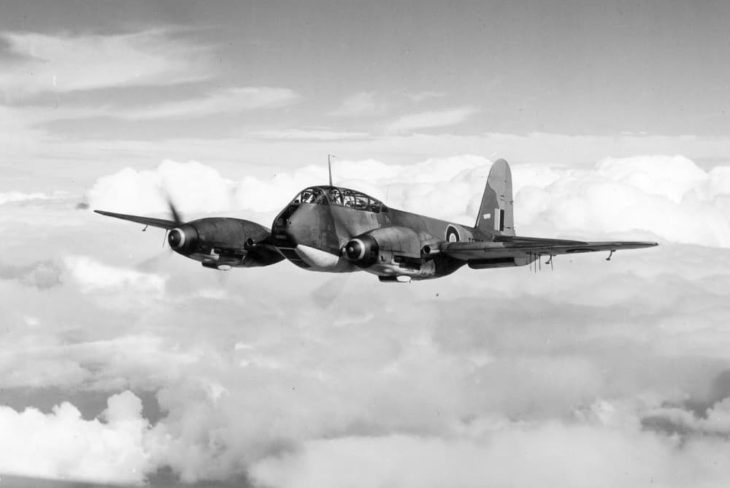
This odd space between fighter and bomber was occupied by numerous aircraft during the war, including the Do 17. However, while the Do 17 was to use speed as its advantage, the Me 410 was to use sheer armament. The plane carried a combination of both machine guns and rockets, making it dangerous to any bomber that crossed its path.
The Me 410 also had advantages in engaging ground targets, as it was able to carry a significant bomb load. With nearly 1,200 produced in the late years of the war, it was a capable deterrent until smaller Allied fighter escorts were able to consistently defeat it.
5. Messerschmitt Bf 110
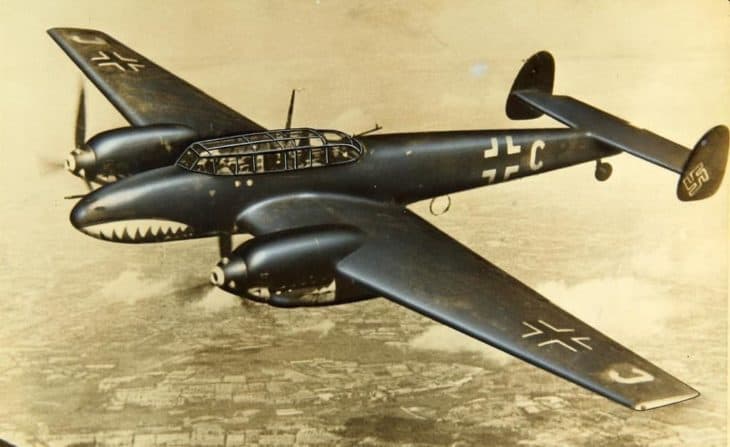
By far the most successful heavy fighter plane used by the Germans during World War II was the Messerschmitt Bf 110. The Bf 110 was a personal favorite of Goring, and therefore it is not surprising that more than 6,000 of the planes were built. While not as fast as many other planes used by the Luftwaffe, it more than made up for this in the sheer number of jobs it could do.
Because of its size, the Bf 110 soon became the German’s night fighter of choice, able to carry radar on board. Doing so allowed Bf 110 pilots to become the best night fighters in Germany. Ultimately, it required a change in tactics by the Allies to finally find a way to defeat the Bf 110.
6. Heinkel He 162

By 1944 it was increasingly clear that Germany was on the losing side of the war, and a call was put out to the country’s engineers, known as the Emergency Fighter Program, that encouraged new technologies to be applied. This included the use of wood and other non-metallic materials to build airframes, and the first plane to use the new techniques was the He 162. Known as the Volkjager, the He 162 was largely constructed from plywood.
While the He 162 did not fly as many combat missions as other planes of the war, it was used during the last ditch defense, and saw the development of at least one other piece of technology that many pilots cannot imagine flying without today – the ejector seat. In fact, no fewer than three pilots bailed out of their He 162s through use of the device.
7. Messerschmitt Me 262
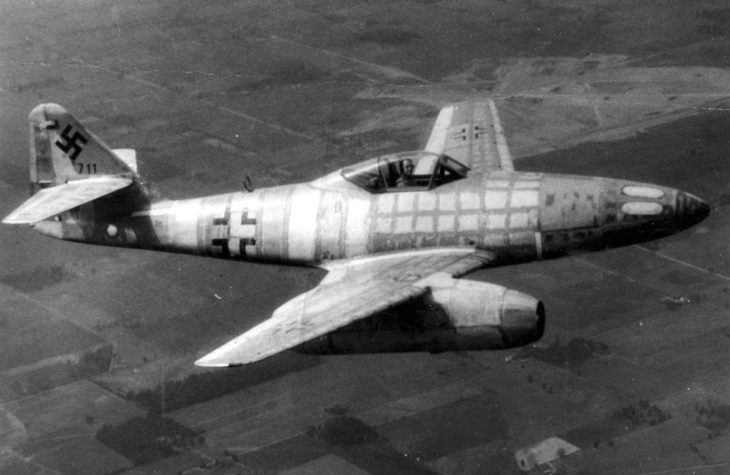
By far the most common jet of the war was the Me 262, widely recognized as the most successful early jet in history. While the British had also built jets during the period, the German Me 262 was both faster and better armed than the Meteor it fought against. It was also more widely built: 1,430 of the plane were constructed during the war.
The Me 262 was much faster than any propeller driven plane of the war, so the Allies had to adopt special tactics to be able to defeat the new plane. German pilots were warned to avoid slowing down to engage American P-51s for fear of being outmaneuvered. However, the only surefire ways that the British and Americans had to defeat an Me 262 were when the plane was taking off, landing, or at the airfield.
8. Messerschmitt Me 163

While the use of jet fighters has become all but universal in the years since World War II, the only time that a rocket-powered plane was used in combat was the German Me 163. Less than 400 were built, but to the Allied air crews who faced them, they were a fearsome opponent. Allied pilots report seeing planes flying past faster than they thought possible, shooting through bomber formations and attacking with impunity. It was rare that an Me 163 could be shot down, though it was possible.
Instead, it was the advanced technology of the Me 163 that ultimately caused it to be more of a psychological weapon. The cockpit was not pressurized, which meant that pilots were largely limited in high altitude flight to as long as they could stand it without passing out. Interestingly, the Luftwaffe ordered Me 163 pilots to consume less fiber so as to lessen the risk of gas expanding in the pilot’s intestines.
Related Posts



